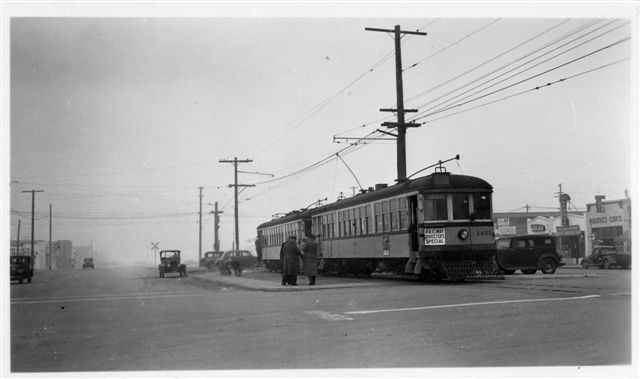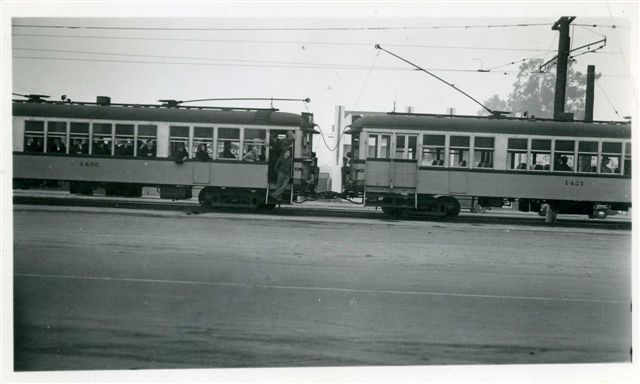1432 at 116th and Vermont
This photo was taken by Ernie Leo at 116th St and Vermont at the south end of the F line. It was a RAILROAD BOOSTERS fan trip to mark the last MU train on the Los Angeles Railway in January of 1939. The railroad crossing in the background is PE’s El Segundo line.
Ernest T. Leo Photo, Ralph Cantos Collection
This is another photo taken that same day showing the MU jumper cable that LARY used, rather than have both trolley poles up. The last MU train was made up of H-3 cars #1421 and #1432.
Ernest T. Leo Photo, Ralph Cantos Collection
Recent Posts
Showing 2 comments




I have never seen a reason given for LARY’s use of an “extension cord” to power the second car in a 2 car multiple unit consist. I believe the reason for this arrangement was LARY’s use of electric switches to throw turnouts/switches at junctions. The motorman simply flipped a switch inside the car to throw the turnout and avoid having to dismount and throw the turnout from the ground. If the second car had its trolley pole in contact with the overhead, the turnout might flip into an unintended position, thereby derailing one or the other car. Should someone have definitive information, it would be appreciated.
that sounds correct. However, on the older cars (H and Standards) to through a switch to the right or left, the operator would use one point of power as the trolley shoe passed the switch contact on the overhead . If the operator did not want to actavate the switch, or to reset the switch from left or right to foward,the opperator just coasted over the trolley wire contact,and the switch would reset itself.On the PCC’s there WAS a track switch actavator botton on the dash. If both poles wewre up on an MU train, this WOULD cause problems with the electric switches.